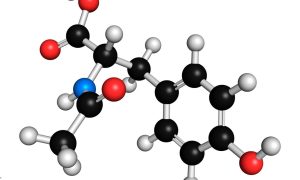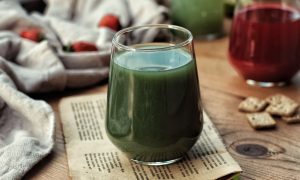Detoxification is a natural process the body performs to eliminate waste products, toxins, and harmful substances that accumulate through daily activities, environmental exposure, and even food. However, when our detoxification pathways become congested or overwhelmed, it can lead to various health issues like brain fog, skin problems, digestive discomfort, and even weight gain. Several practical ways exist to support and open these pathways, ensuring optimal health and well-being. In this article, we will explore several strategies that can help enhance detoxification, promote drainage of toxins, and ultimately support your body’s natural ability to cleanse itself.
Supplement Probiotics
Your digestive system plays a pivotal role in eliminating toxins from your body. Probiotics, which are beneficial bacteria, can help maintain a healthy balance in your gut, supporting digestive health and enhancing detoxification. A healthy gut helps break down waste products and prevents the buildup of harmful substances in the digestive tract.
From my own experience, taking a daily probiotic supplement has improved my digestion, helped reduce bloating, and promoted more regular bowel movements. This, in turn, supports the body’s natural detoxification efforts by aiding the removal of toxins through the gastrointestinal tract.
Probiotics also contribute to a balanced microbiome, which is essential for maintaining healthy detoxification pathways. When gut bacteria are in balance, they help break down foods more efficiently, preventing undigested food particles and toxins from lingering in the body.
Glutathione and B Vitamins

It helps neutralize free radicals and supports the liver in processing and eliminating toxins, hefty metals, and fat-soluble toxins. Supplementing with glutathione can provide an added boost for individuals looking to enhance their detoxification pathways. Alongside glutathione, B vitamins are essential for energy production and detoxification. B vitamins, particularly B6, B12, and folate, help support the liver and improve its ability to filter and eliminate toxins from the body. They also regulate the body’s detoxification phases.
Do Exercise
Physical activity encourages blood circulation, increases lymphatic flow, and helps the body excrete toxins through sweat. The more we move, the more we activate the body’s natural drainage pathways, including the lymphatic system, which is key in filtering waste products and harmful substances. Regular exercise, whether it’s yoga, cycling, running, or even brisk walking, can stimulate the flow of lymphatic fluid, helping to expel toxins that may be stuck in your tissues.
Exercise also supports regular bowel movements, ensuring that waste is regularly eliminated. And don’t forget about the mental clarity that comes with it—exercise has an incredible way of clearing brain fog and boosting mood.
Infrared Sauna Therapy
Unlike traditional saunas, which primarily heat the air around you, infrared saunas use light to penetrate the skin, warming up the body from within. This process induces deep sweating, which helps to release toxins, heavy metals, and other impurities from the body.
Infrared sauna therapy also improves circulation and promotes relaxation, which can help reduce stress—a known factor hindering detoxification.
Aim for 20-30-minute sessions a few times a week to get the most out of sauna therapy. This simple practice can be a powerful tool for supporting your body’s detoxification process.
Use Salt Baths
Salt, especially Epsom salt, is rich in magnesium, a mineral known to relax muscles and detoxify the body. When dissolved in warm water, salt helps draw out toxins through the skin, the body’s largest organ.
Adding a cup or two of Epsom salt to your bath can help reduce inflammation, promote relaxation, and support the elimination of toxins. This practice supports detoxification and improves skin conditions like eczema and acne, often signs of toxin buildup.
Limit Alcohol
While occasional moderate consumption may not overload the system, excessive drinking can strain the liver and hinder its detoxification abilities. The liver is the primary organ responsible for filtering toxins from the blood, and overconsumption of alcohol can lead to a buildup of waste products in the body. Limiting alcohol intake and giving your liver the time and space it needs to perform its functions can enhance detox pathways.
Hydrate
The body requires adequate water intake to flush out waste products, regulate temperature, and maintain optimal organ function. Water helps transport toxins to the kidneys, which filter and eliminate them through urine. Drinking plenty of water throughout the day is a simple yet highly effective way to support your detox process. Remember, your body’s hydration needs are unique, so listen to it. Aim for a minimum of 8-10 cups of water daily, but more if you’re physically active or live in a warm climate.
Choose Whole + Organic Foods.
Whole, organic foods provide essential nutrients that support detoxification while reducing the intake of harmful chemicals, pesticides, and additives that may burden your body’s detox pathways. Opting for organic foods minimizes exposure to dangerous toxins like pesticides, herbicides, and fungicides often found in conventionally grown produce. Fiber-rich foods like sweet potatoes, leafy greens, and cruciferous vegetables can further support detoxification by promoting regular bowel movements and liver health.
Use Non-Toxic Products

Most personal care items—such as shampoos, lotions, and cleaners—contain chemicals and toxins that interfere with your body’s natural detoxification process. To support your detox, pick non-toxic, natural products that will not contribute toxic chemicals to your body. Becoming non-toxic reduces exposure to chemicals like parabens, phthalates, and artificial fragrances that will accumulate in your body and interfere with natural detoxification. In my own life, this transition has reduced skin irritation and has even improved respiratory health. It’s a small change, but it makes a big difference in improving overall wellness.
Sufficient Sleep
During deep sleep, your body goes into repair mode, detoxifying at a cellular level. Lack of sleep can impair detoxification pathways, resulting in the accumulation of toxins that affect mood, energy, and mental clarity.
Prioritizing sleep, aiming for at least 7-8 hours each night, profoundly impacts how I feel the next day. When I get sufficient rest, I wake up refreshed, and my skin looks clearer. Create a calming bedtime routine and a consistent sleep schedule to support detoxification.
Conclusion
Supporting your body’s detoxification pathways is crucial for optimal health and well-being. By following these tips—ranging from incorporating probiotics and glutathione into your diet to using infrared sauna therapy and limiting alcohol—you can open and support your detox pathways, allowing your body to eliminate harmful substances naturally. Taking a holistic approach to detoxification is essential, and by consistently nurturing these pathways, you’ll feel more vibrant, energetic, and healthy.
ALSO READ: How to Age Gracefully in Style
FAQs
Detoxification pathways are systems in the body responsible for eliminating toxins and waste products, including the liver, kidneys, digestive tract, and skin.
Symptoms of blocked detox pathways can include fatigue, brain fog, skin issues, digestive discomfort, and weight gain. Supporting your detox pathways with proper hydration, nutrition, and exercise can help prevent congestion.
For optimal results, aim for 2-3 infrared sauna sessions per week. Start with shorter sessions and gradually increase the duration as your body becomes accustomed to the heat.
It’s essential to listen to your body and avoid overdoing it. Gentle, consistent detox practices are the most sustainable. If you experience discomfort or adverse reactions, reduce the intensity and consult a healthcare professional.




